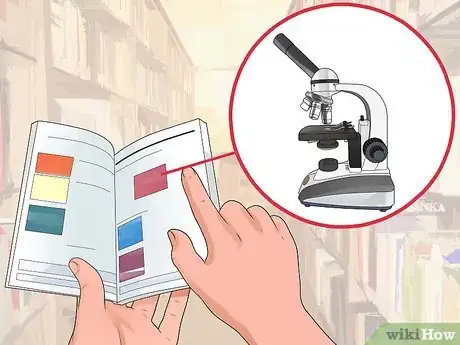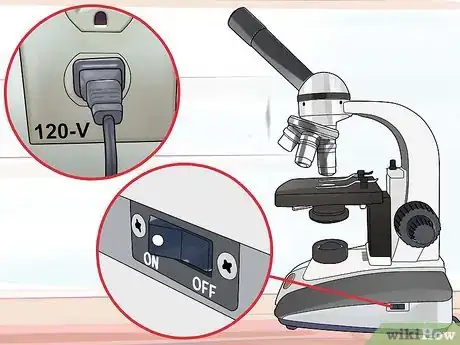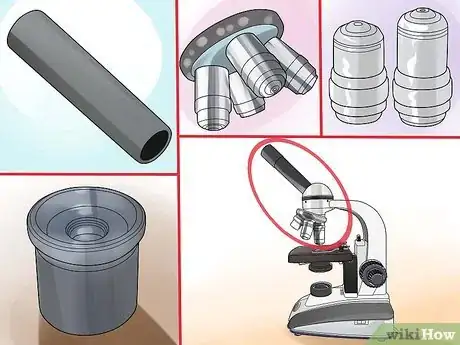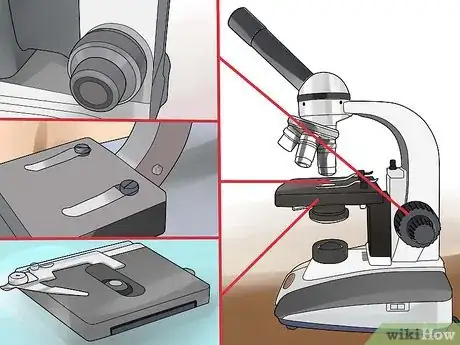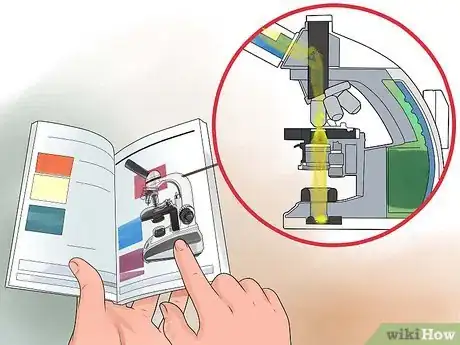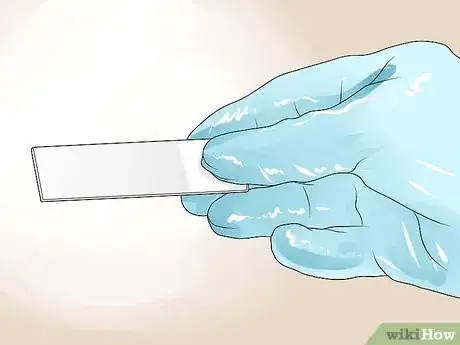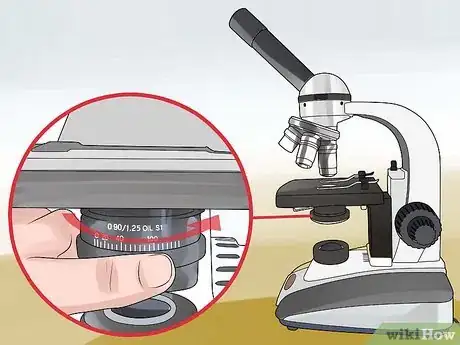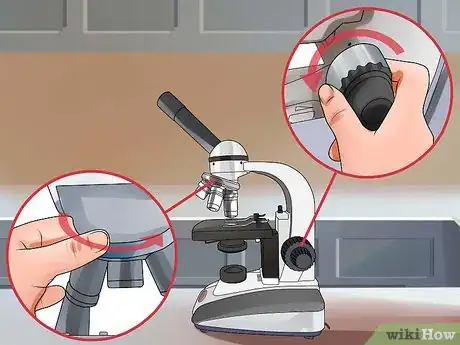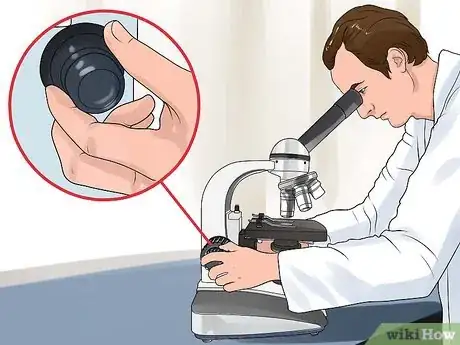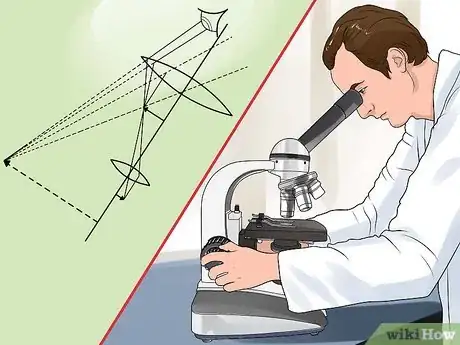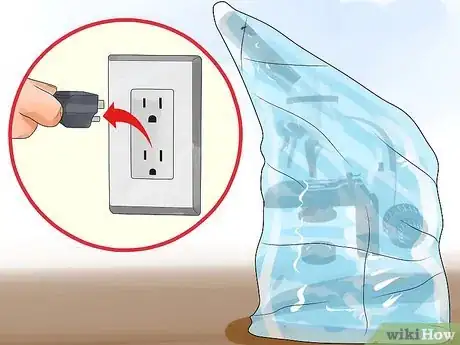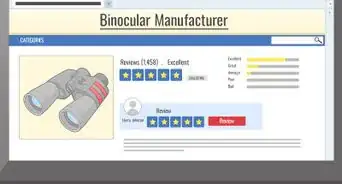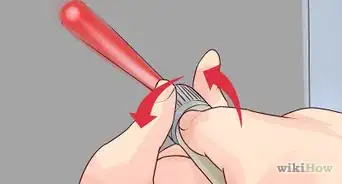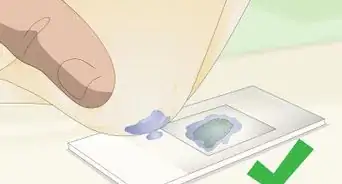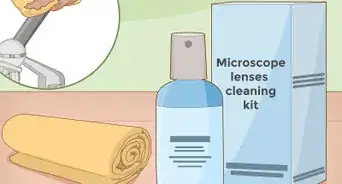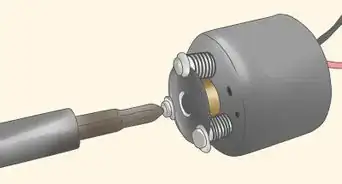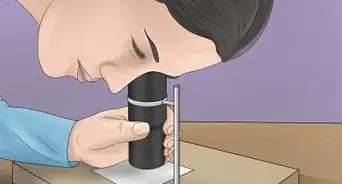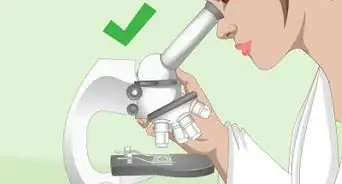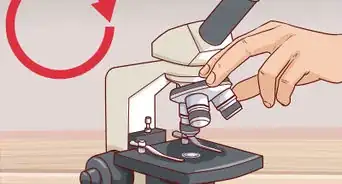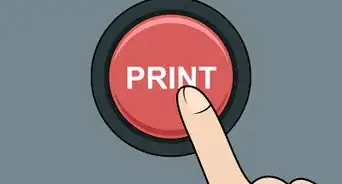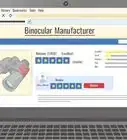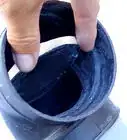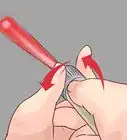This article was co-authored by Bess Ruff, MA. Bess Ruff is a Geography PhD student at Florida State University. She received her MA in Environmental Science and Management from the University of California, Santa Barbara in 2016. She has conducted survey work for marine spatial planning projects in the Caribbean and provided research support as a graduate fellow for the Sustainable Fisheries Group.
wikiHow marks an article as reader-approved once it receives enough positive feedback. In this case, several readers have written to tell us that this article was helpful to them, earning it our reader-approved status.
This article has been viewed 147,154 times.
A compound microscope is a powerful magnification tool commonly used in scientific laboratories for viewing bacteria and other tiny cell samples. Compound microscopes use at least two convex lenses placed on opposite ends of a tube. As you raise and lower the top portion of the tube, known as the eyepiece, the microscope focuses on and magnifies the image at the bottom of the tube. Despite its complexities, you do not have to be a scientist to learn how to use a compound microscope.
Steps
Understanding Your Microscope
-
1Familiarize yourself with the microscope. Examine all the parts, and learn their name and function. If you are in a class, the instructor should review this with the class. If you are learning how to use a compound microscope on your own, you may have a diagram that came with your microscope which provides this information.[1]
- Place your microscope on a clean, level surface near an electrical outlet.
- Always carry your microscope with two hands. Hold the arm with one hand, support the base with your other hand.
-
2Turn the microscope on. This will require plugging it into an appropriate outlet. The switch is usually located on the microscope's base.[2]
- The electricity illuminates the components in a compound microscope.
- Make sure your power source is appropriate for your microscope. Commonly, compound microscopes require a 120-V power source.
Advertisement -
3Inspect the head and arm. The head holds the optical elements, which include the eyepiece and eyepiece tube, the nose piece, and the objective lenses. It is also known as the body of the microscope.[3] The arm connects the head to the base. There are no lenses on the microscope's arm.[4]
- The eyepiece, or ocular, is what you look through to see the object beneath the microscope.
- The eyepiece tube holds the eyepieces in place.
- The nosepiece holds the objective lenses.
- The objective lenses are the main lenses of the compound microscope. There can be 3, 4 or 5 lenses on a compound microscope, depending on its level of complexity.
- The arm provides support for the microscope's head.
-
4Examine the base. The base holds up the microscope and provides the stage to place samples onto. The base also contains the focusing knobs (both fine and coarse).[5]
- The focusing knobs may be either separate or coaxial (meaning the coarse focusing knob is on the same axis as the fine focusing knob.)
- The stage is where you place the slide holding the specimen. You can use a mechanical stage when working with higher magnifications.
- Make sure to use stage clips should when you adjust stages manually.
-
5Learn about light sources. The compound microscope provides its own light sources for optimal viewing. These light sources are in the base of the microscope.[6]
- Light enters the stage through the aperture, which allows the light to reach the slide.
- The illuminator provides light for the microscope. Typically, the illuminator uses low-wattage halogen bulbs. Lighting is continuous and variable.
- A condenser collects and focuses the light from the illuminator. It's located beneath the stage, often together with the iris diaphragm.
- The condenser focus knob moves the condenser up and down to adjust the light.
- The iris diaphragm is located below the stage. Working together with the condenser, the iris diaphragm controls the focus and quantity of light provided to the specimen.
Focusing the Microscope
-
1Prepare your slide. Always prepare slides with a cover slip or cover glass to protect the specimen you're viewing with the microscope. This will also protect the lens of your microscope from anything that might press against it.[7]
- Position your sample between 2 pieces of glass to make a slide.
- Place the slide on the center of the stage over the glass hole.
- Move the 2 stage clips over the sides of the slide to secure it into place.
-
2Make sure that the iris diaphragm is open. This is usually just under the stage. You want to have the best amount of light to reach the slide and the lenses.[8]
- Don’t use the iris diaphragm to control the light. Use it to optimize the level of contrast and resolution for clearer viewing. Use the lowest magnification needed.
-
3Arrange the revolving nose piece and knobs. Start with the lowest level of magnification. This will allow you to select the part of the specimen that offers the most interest. Once you've located this, you may increase the magnification to better view this part.[9]
- Turn the nosepiece turret until the shortest lens (4x) is above your sample. It should click and feel rigid when it is in place. The shortest objective lens is the least powerful (the lowest level of magnification) and is the easiest level to begin when magnifying an object.
- Twist the coarse focus knob (the large one) on the side of the base so the stage moves upward toward the short objective lens. Perform this without looking into the eyepiece. It's important to make sure the slide does not touch the lens. Stop twisting the coarse knob just before the slide contacts the lens.
-
4Focus the microscope. Looking through the eyepiece, arrange the illuminator and the diaphragm to reach the most comfortable level of light. Move the specimen slide so that the image is in the center of your view.[10]
- Arrange the illuminator until you've arrived at a comfortable level of light. The brighter the illuminator shines, the better you will be able to see your specimen.
- Twist the coarse focus knob the opposite way as you had before, so the stage moves away from the lens. Do this slowly until the sample begins to focus.
-
5Magnify the image. Use the coarse focus knob to get the specimen in view, and the fine focus knob to bring the adjusted slide into focus. You may need to reposition your slide as you magnify.[11]
- When using a compound microscope, the correct viewing technique is to keep both eyes open. Look through the eyepiece with one eye, and look outside the microscope with the other eye.
- When you use the 10x lens to magnify the image, it may help to lower the amount of light for better clarity.
- Readjust your illuminator and iris diaphragm as needed.
- Switch lenses by rotating the nose piece turret to a longer lens.
- Perform necessary focusing adaptations.
- Once you've found a clear image, change to a higher power objective lens. This should be a simpler process, requiring only minimal use of the focusing adjustment.
- If you can't focus on your specimen, repeat the steps suggested above.
-
6Put the microscope away. Dust can cause great damage to a compound microscope. It can scratch delicate lenses, clog adjustments, and clutter the images visible through your eyepiece.[12]
- Always turn off the power when you're finished using your microscope.
- Lower the stage, remove your specimen and cover the equipment with a dust-repellent cover.
- Avoid touching any lens or glass with your fingers.
- Always carry the microscope carefully with both hands.
Expert Q&A
Did you know you can get expert answers for this article?
Unlock expert answers by supporting wikiHow
-
QuestionWhat is the average cost of a good microscope?
 Bess Ruff, MABess Ruff is a Geography PhD student at Florida State University. She received her MA in Environmental Science and Management from the University of California, Santa Barbara in 2016. She has conducted survey work for marine spatial planning projects in the Caribbean and provided research support as a graduate fellow for the Sustainable Fisheries Group.
Bess Ruff, MABess Ruff is a Geography PhD student at Florida State University. She received her MA in Environmental Science and Management from the University of California, Santa Barbara in 2016. She has conducted survey work for marine spatial planning projects in the Caribbean and provided research support as a graduate fellow for the Sustainable Fisheries Group.
Environmental Scientist
-
QuestionHow do I prepare a slide?
 Community AnswerPut the object you are observing on the slide, and carefully cover it with a coverslip (a small, square, clear plastic cover). Make sure the coarse adjustment knob is rotated all the way down, especially if you are at 40X magnification. Place the slide underneath the eyepiece, with the coverslip side facing up.
Community AnswerPut the object you are observing on the slide, and carefully cover it with a coverslip (a small, square, clear plastic cover). Make sure the coarse adjustment knob is rotated all the way down, especially if you are at 40X magnification. Place the slide underneath the eyepiece, with the coverslip side facing up. -
QuestionCan I add custom magnification features to the microscope?
 Community AnswerYes, you can.
Community AnswerYes, you can.
Warnings
- Do not place the compound microscope on an uneven surface. You will not be able to focus properly and the microscope could wobble and fall.⧼thumbs_response⧽
- Always carry the compound microscope with both hands. One hand should grasp the arm and the other should be placed flat under the base. The equipment is fragile and expensive.⧼thumbs_response⧽
- Do not touch the glass of the lens with your finger. This could damage the lens and render it unusable.⧼thumbs_response⧽
- Keep both eyes open when viewing through a microscope. Although only one eye surveys the specimen, you can strain that eye if the other is closed.⧼thumbs_response⧽
References
- ↑ http://www.microscope.com/education-center/how-to-guides/how-to-use-a-compound-microscope/
- ↑ http://www.microscopemaster.com/use-and-adjust-a-compound-microscope.html
- ↑ http://www.microscopemaster.com/use-and-adjust-a-compound-microscope.html
- ↑ http://www.microscope.com/education-center/microscopes-101/compound-microscope-parts/
- ↑ http://www.microscope.com/education-center/microscopes-101/compound-microscope-parts/
- ↑ http://www.microscope.com/education-center/microscopes-101/compound-microscope-parts/
- ↑ http://www.microscope.com/education-center/how-to-guides/how-to-use-a-compound-microscope/
- ↑ http://www.microscopemaster.com/use-and-adjust-a-compound-microscope.html
- ↑ http://www.microscope.com/education-center/how-to-guides/how-to-use-a-compound-microscope/
About This Article
To use a compound microscope, plug the microscope into a nearby outlet and prepare the slide with a cover slip or cover glass to protect the specimen. Next, place the slide on the center of the stage, over the glass hole, and use the two stage clips to secure the slide in place. Then, set the microscope to the lowest level of magnification by turning the nosepiece turret until the shortest lens is above your sample. Finally, look through the eyepiece and focus the microscope by using the coarse focus and fine focus knobs. To learn about increasing the magnification, read on!
